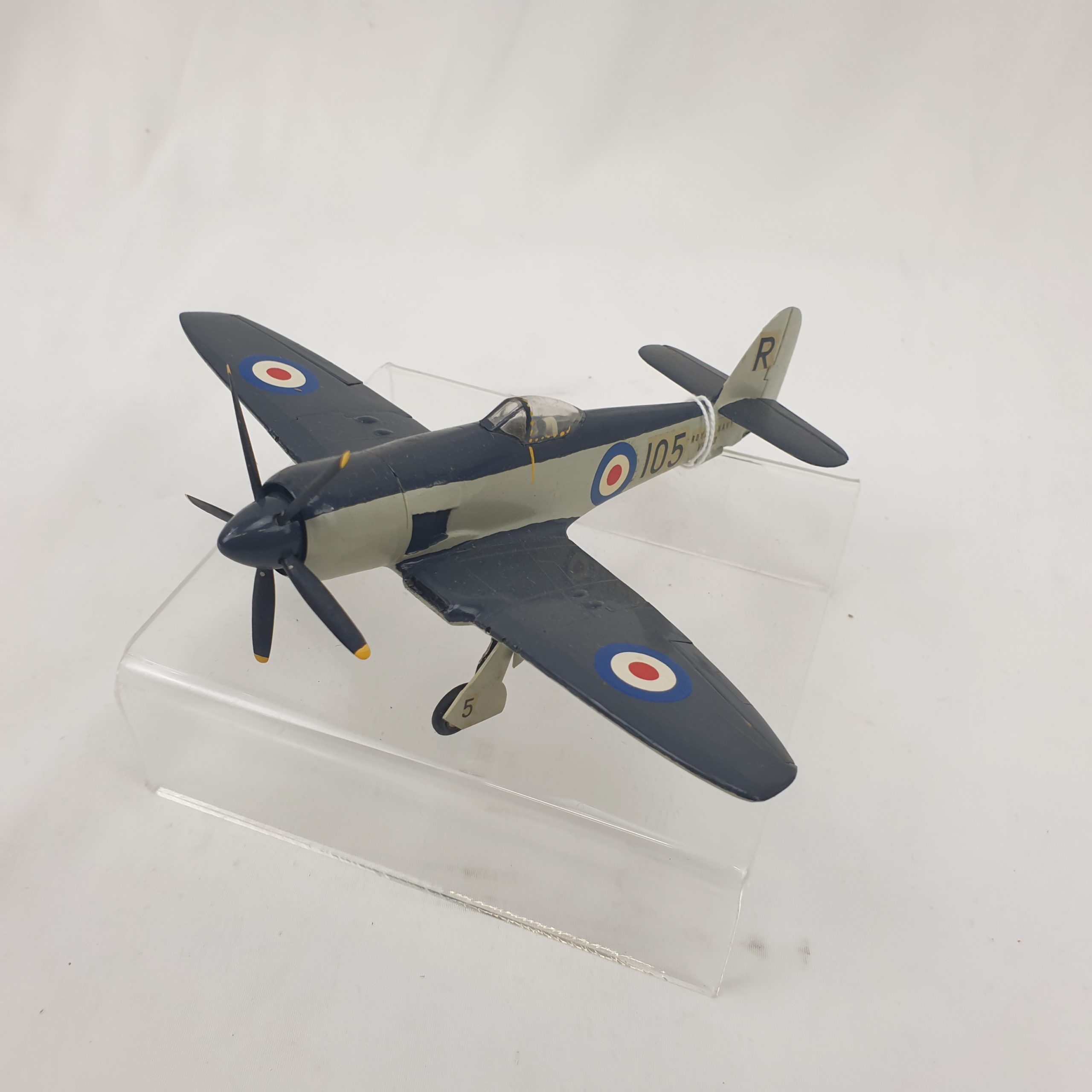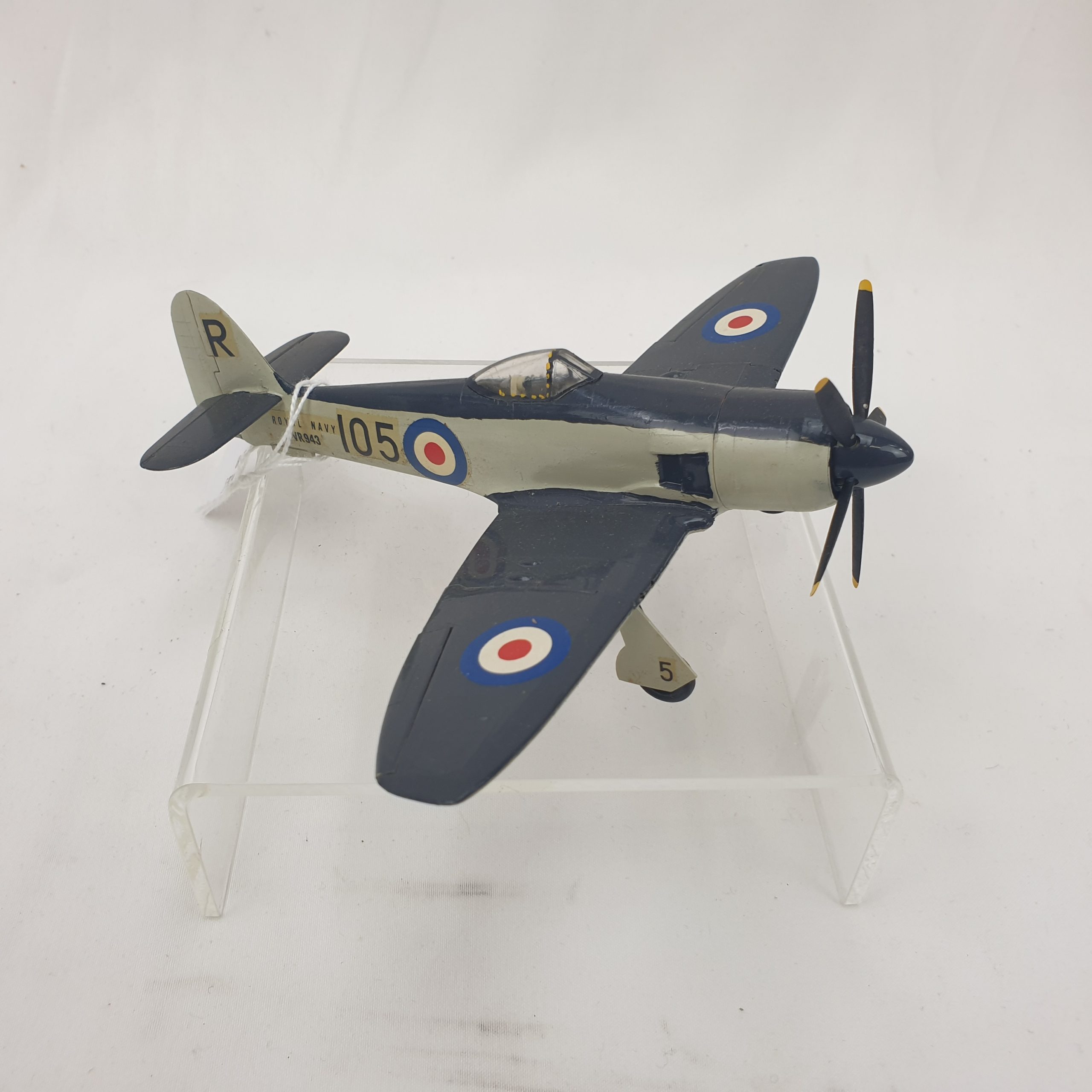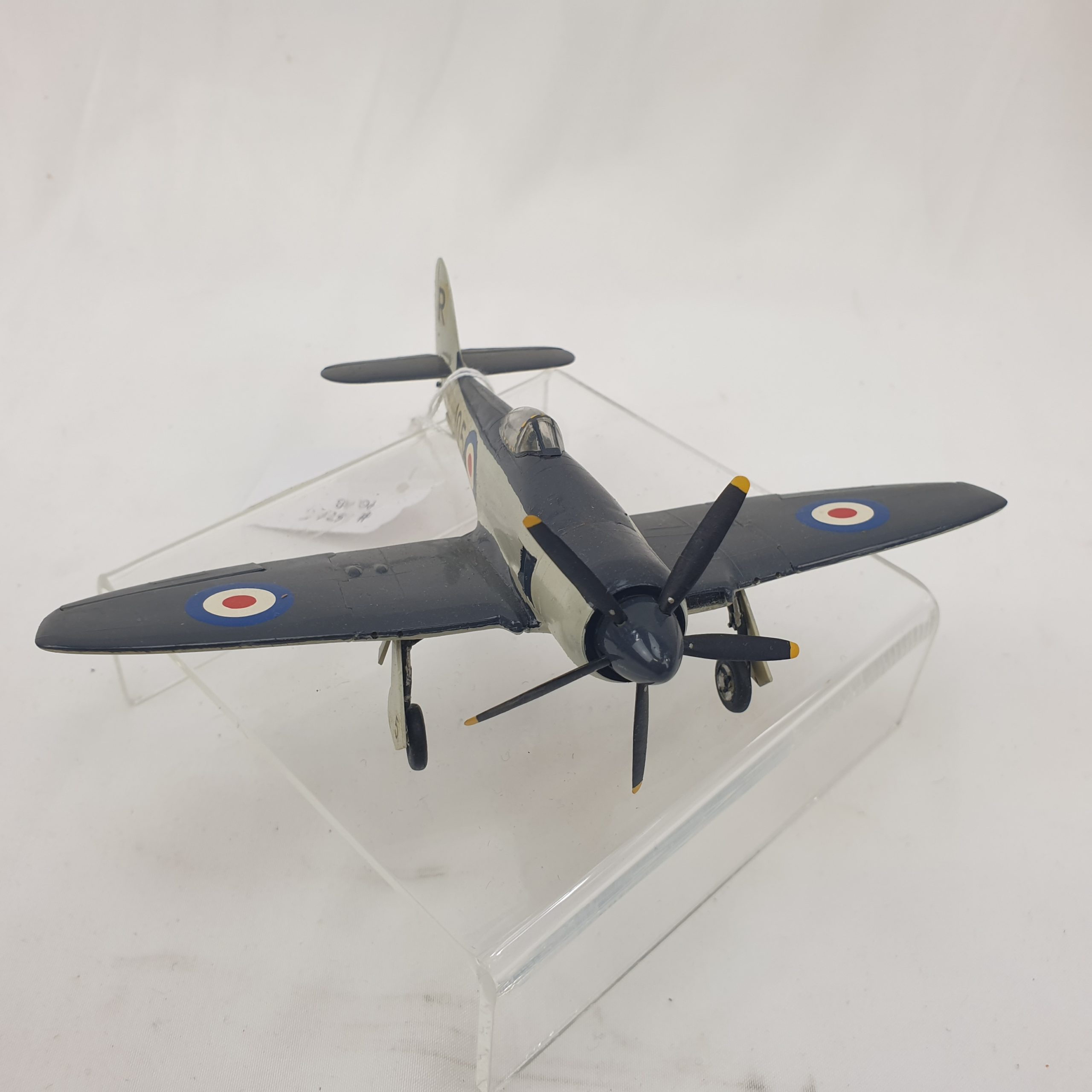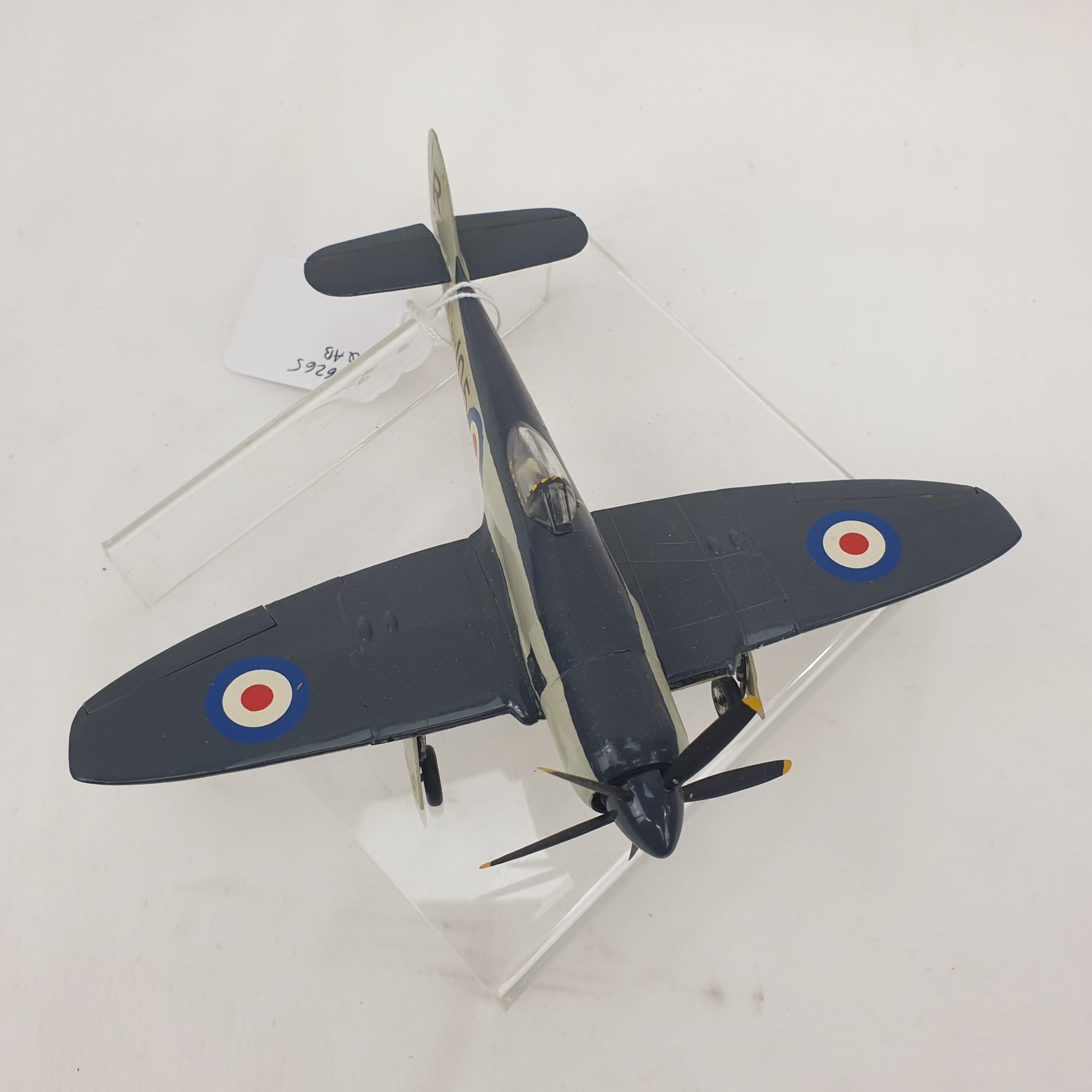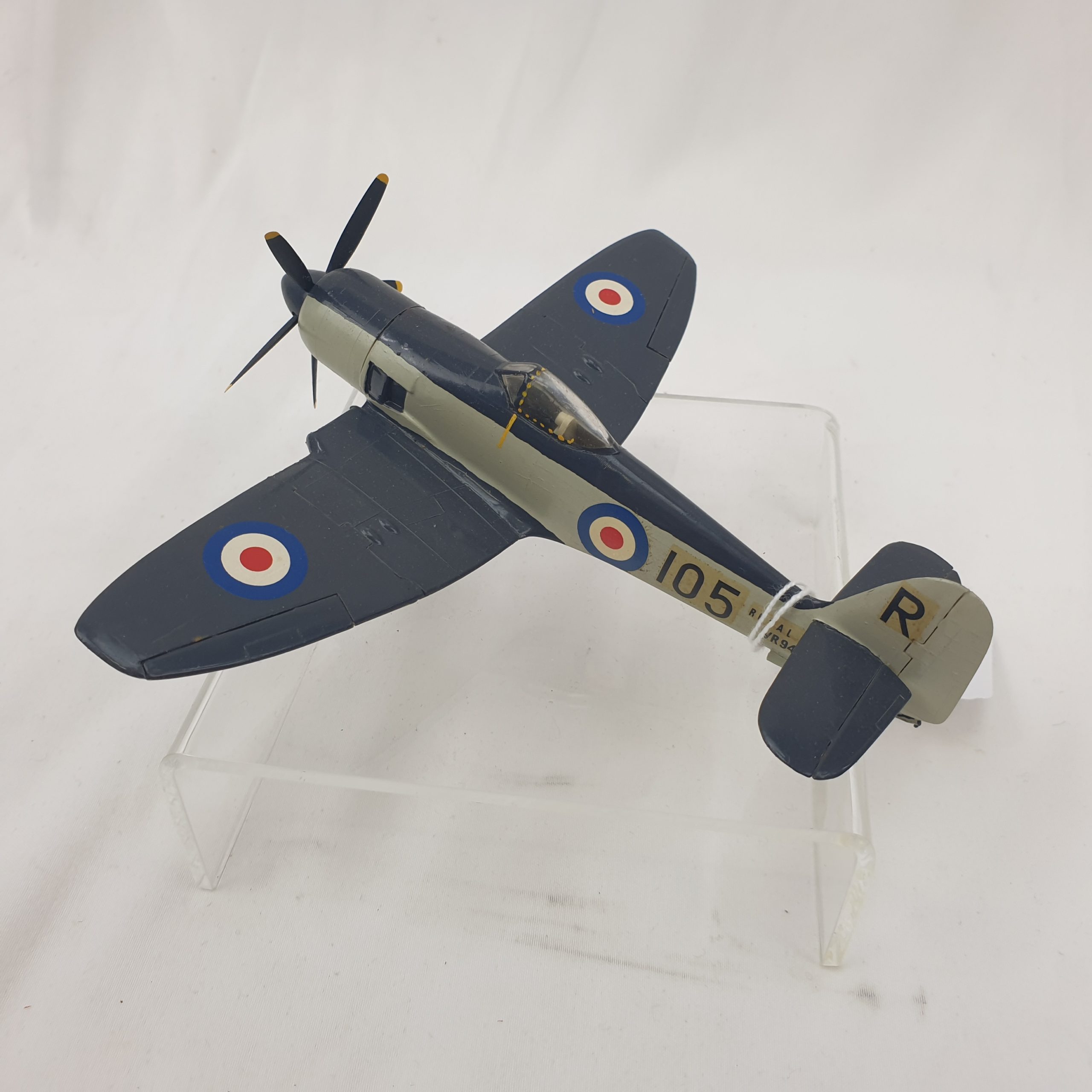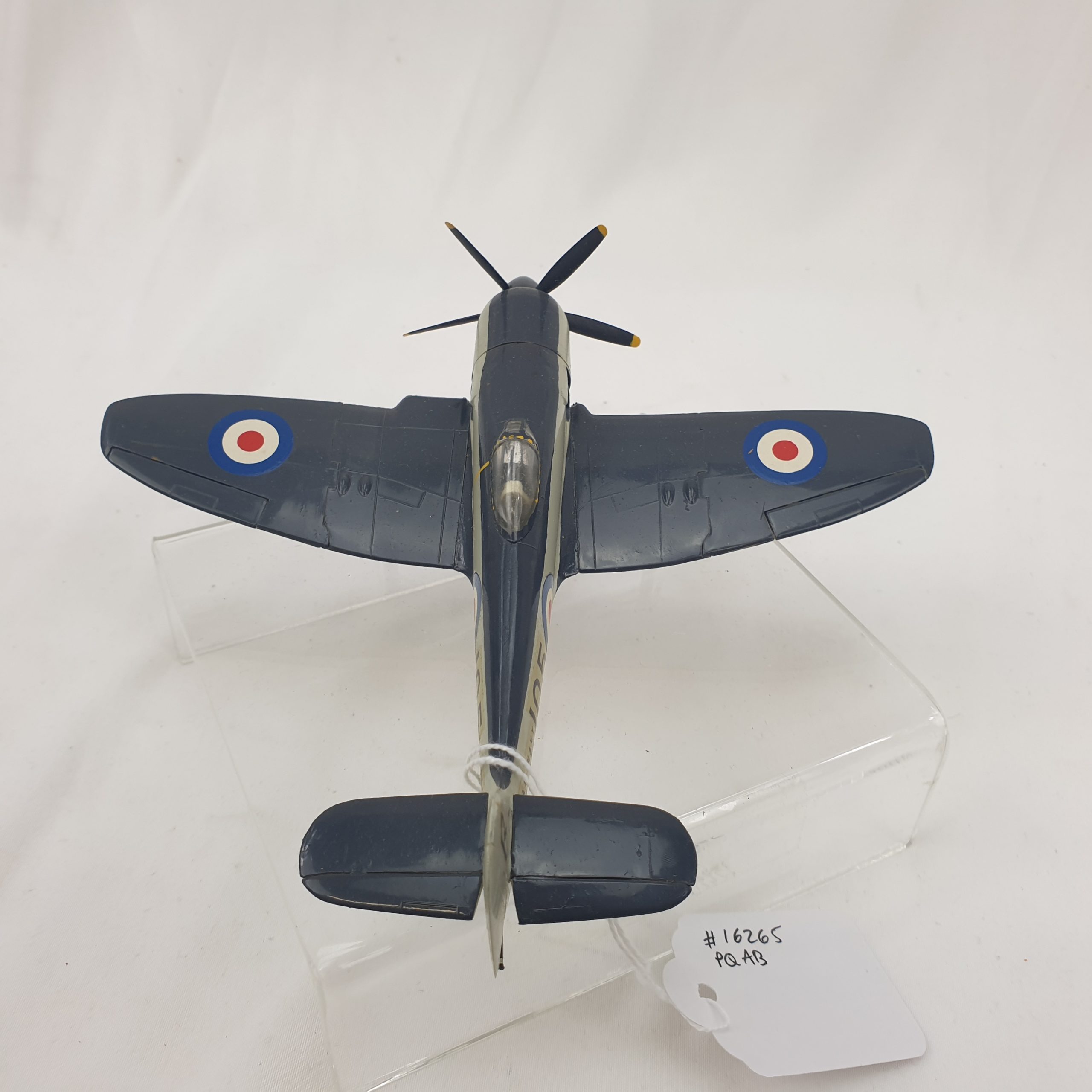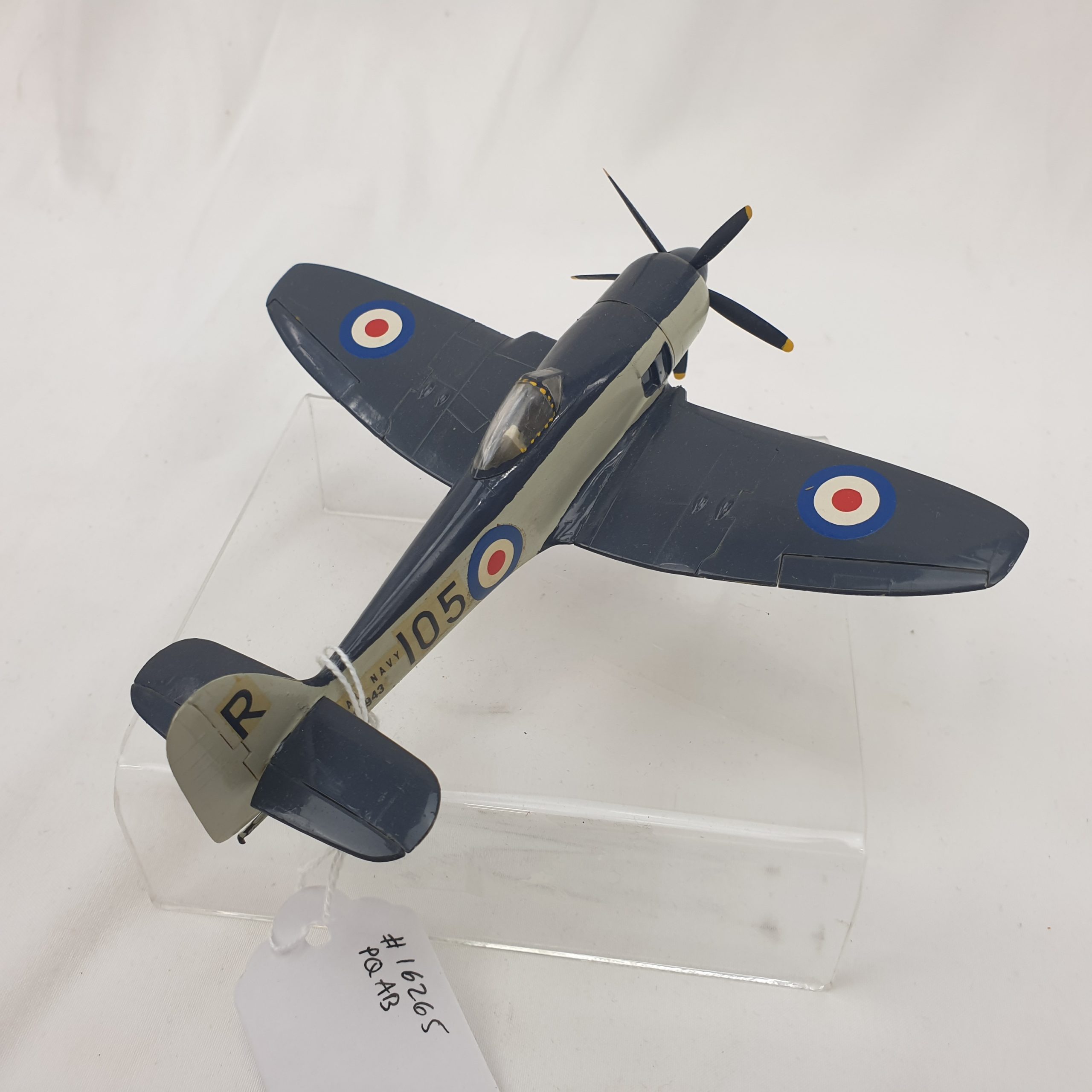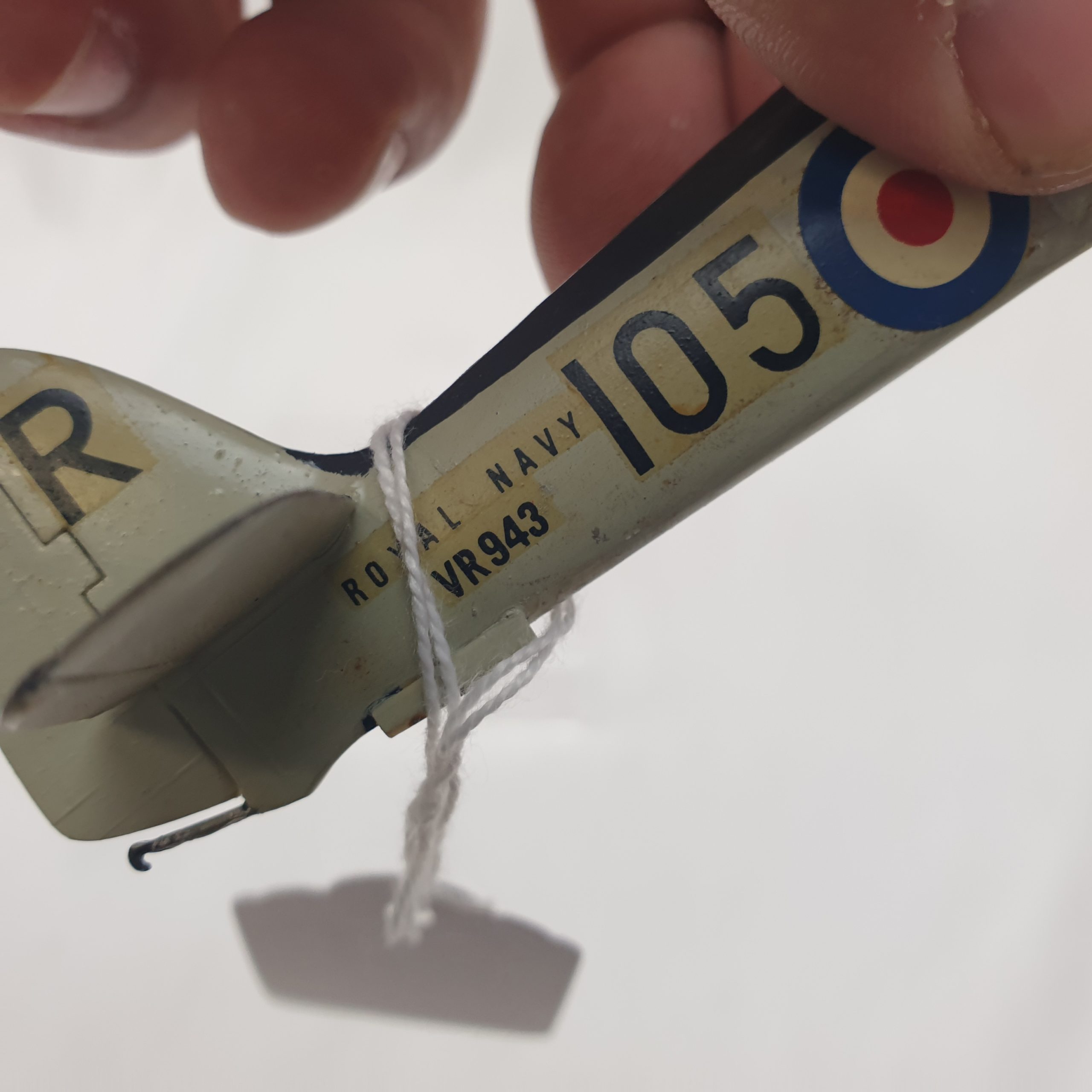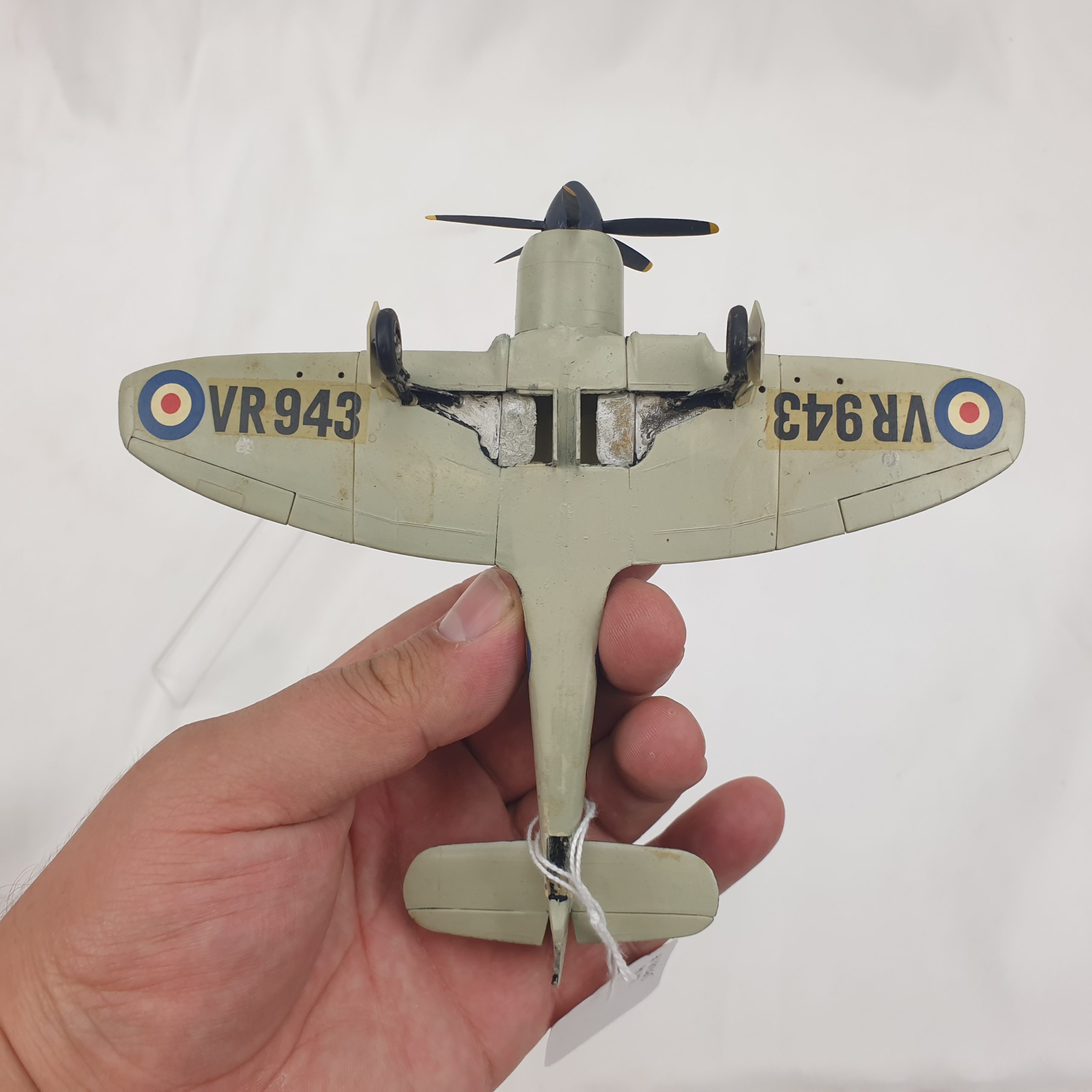~ Supermarine Sea Fury Model Airplane ~
The Supermarine Sea Fury is a British fighter aircraft that was developed during and after World War II. It was one of the last propeller-driven fighter aircraft to serve with the Royal Navy and other air forces.
Here is a brief history of the Supermarine Sea Fury:
Development: The development of the Sea Fury can be traced back to its predecessor, the Hawker Tempest. Supermarine, a subsidiary of Vickers-Armstrongs, designed the aircraft as an evolution of the Hawker Tempest to meet the changing needs of the Royal Navy’s Fleet Air Arm. The initial design work began in 1942, and the first prototype flew in September 1944.
Design: The Sea Fury was a single-seat, carrier-based fighter aircraft. It featured a powerful Bristol Centaurus radial engine and a distinctive contra-rotating propeller. This engine produced more than 2,500 horsepower, giving the Sea Fury impressive speed and climb rate.
Operational Service: The Sea Fury entered service with the Royal Navy in 1945, towards the end of World War II. However, it did not see combat during the war. Instead, it became a part of the post-war Fleet Air Arm and served as a front-line fighter and ground attack aircraft.
Korean War: The Sea Fury gained prominence during the Korean War (1950-1953) when it was used by the Royal Navy and the Royal Australian Navy in the Korean theater. It primarily performed ground attack missions, targeting North Korean and Chinese positions. Its speed, firepower, and durability made it effective in these roles.
Export: The Sea Fury was also exported to other countries, including Canada and the Netherlands, where it served in their respective naval air arms.
Civilian Use: After its military service, many Sea Furies were sold as surplus and found new lives in civilian hands. Some were converted for civilian racing, and the Sea Fury became a popular aircraft in air racing competitions.
Variants: Several variants of the Sea Fury were produced, including fighter-bomber versions and two-seat trainer variants. The most famous variant is the FB.11, which saw the most extensive service.
Retirement: The Sea Fury gradually retired from military service as jet aircraft became the standard for naval aviation. However, some continued to serve in reserve and training roles into the 1960s.
Preservation: Today, a number of Sea Furies have been preserved and restored in flying condition. They are popular attractions at airshows and aviation museums, showcasing the history of naval aviation.
The Supermarine Sea Fury is remembered as one of the last and most successful piston-engine fighters, known for its robustness, speed, and combat effectiveness during the Korean War. It played a significant role in the transition from propeller-driven aircraft to jet propulsion in naval aviation.
~ Condition ~
Please see the pictures
~ Dimensions ~
The wingspan is 16 cm and the length of the piece is 15cm.


